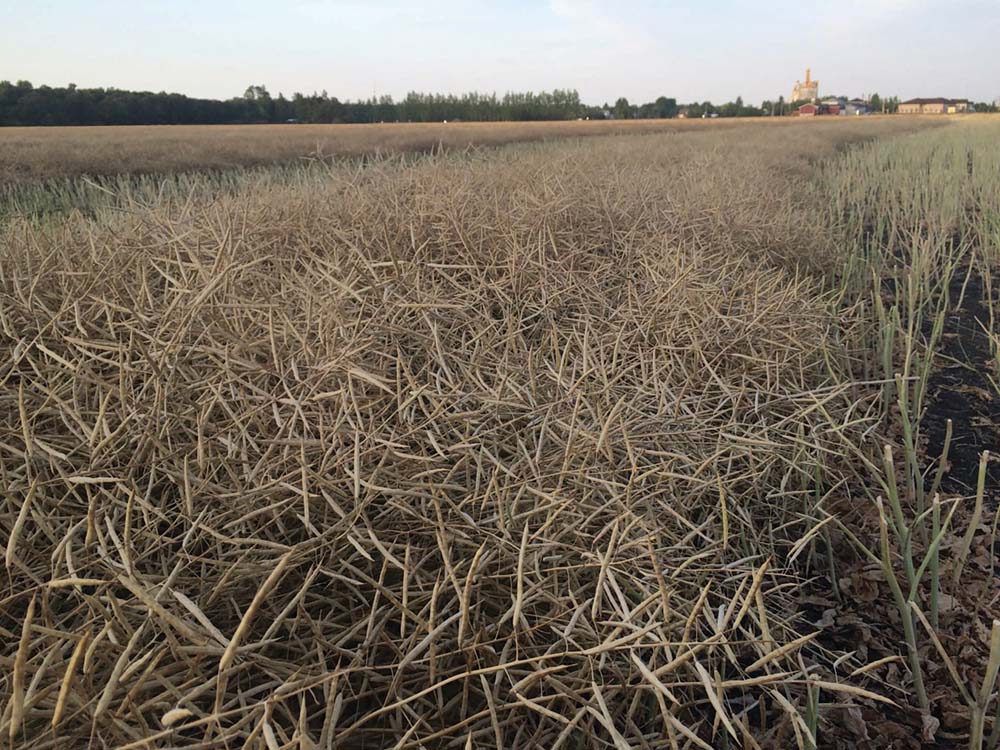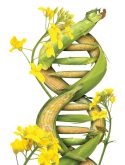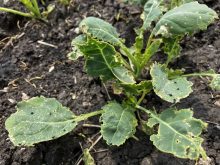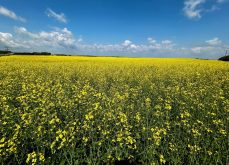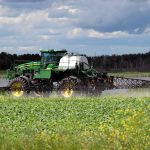Canada could export up to two million tonnes of canola seed to the European Union (EU) this crop year, more than doubling normal shipments, but Canadian canola farmers must first be certified as ‘sustainable.’
For most Canadian farmers the process won’t be difficult.
That’s the message the Canola Council of Canada (CCC) delivered during a webinar Aug. 22.
“Europe is an opportunity for our canola, especially this year,” said Brian Innes, the council’s vice-president of public affairs. “There has been a number of media articles about how Europe has a smaller crop than normal and we in Canada obviously have canola to export in the situation we are facing with China.”
Read Also

CUSMA access key among other trade noise: Seeds Canada panel
Seeds Canada conference panelists say Canada needs to stay focused and wait as U.S. trade and tariff chaos develops, and a Canada-U.S.-Mexico Agreement review looms
Why it matters: The EU, not traditionally a big Canadian canola seed market, could help reduce a projected record canola carry-over in the wake of a drop in Chinese demand, potentially bolstering canola prices.
China, Canada’s biggest canola seed customer, has imported very little since March, apparently to protest Canada’s arrest of a senior Huawei executive last December at the request of the United States.
Normally the EU produces around 20 million to 21 million tonnes of rapeseed a year, but this year it’s expected to bin just 17 million tonnes, Chad Molesky, Viterra’s merchandising manager told the webinar.
“So we’ve seen a big appetite from that marketplace for imports,” he said.
Meanwhile, a 39 per cent drop in Canadian canola seed exports in the crop year that ended July 31 has led Agriculture and Agri-Food Canada to forecast a record canola seed carry-over of 3.7 million tonnes. (The record set in 2013-14 is 3.008 million.)
Higher Canadian canola supplies have resulted in lower canola prices, which has Canadian canola “looking very cheap” compared to traditional EU rapeseed suppliers such as Ukraine and Australia, Molesky said.
In crop year 2015-16 Canada exported 789,000 tonnes of canola seed to the EU, according to data posted on the canola council’s website. This crop year Canada could ship 1.2 million tonnes and perhaps up to two million, Molesky said.
“The limitation of that might just be the grower sign ups (for certification),” he added, speaking also for Cargill and G3, which are also part of the certification process.
“We really need the growers to be certified. Without the certifications we don’t have the volumes to export. It’s really as simple as that.”
The EU has made it law that it will only import sustainably produced canola.
Certification is easy and can be done through participating western Canadian grain companies, Molesky said (see sidebar).
“It’s as simple… as coming into your local elevator location, answering five questions, ticking off a box and you become sustainable,” he said. “The more producers we have signed up as an industry the more opportunities we are going to have for exports of seed.
“Almost every single producer in Western Canada will pass.”
A percentage of farmers are subject to on-farm audits, but they aren’t onerous either, Molesky said.
“We’ve been doing these assessments and audits for a number of years and I can assure you most of our farmers who have been through it will say ‘gee, that was easier than I thought it was going to be.’
“It’s very simple and there are no concerns with answering the questions.”
Certification is free and valid for one year. Renewals are even simpler, said Norbert Schmitz, managing director of International Sustainability & Carbon Certification (ISCC).
The EU’s biggest concern about sustainability is that canola is not produced on land, one hectare or more, that was forest, wetland, or protected for biodiversity before 2008, said Norbert Schmitz, managing director of International Sustainability & Carbon Certification.
The other prerequisites for certification are:
• Using good agricultural practices;
• Having safe working conditions;
• Compliance with human, labour and land rights;
• Compliance with laws and international treaties;
• Good management practices and continuous improvements.
Doyle Wiebe, who farms near Langham, Sask., and is a director with the Canadian Canola Growers Association, said he didn’t have to change anything on his farm when he was first certified in 2017.
“The process was quite simple,” he said, but added grain companies should be prepared to provide more background information to farmers if they ask for it.
The canola council has prepared a checklist to assist farmers preparing for certification (see sidebar).
Two-thirds of the EU’s rapeseed is used to make biodiesel, so most of Canadian canola exported there will be used in fuel, Innes said.
How to prepare for EU assessment
STEP 1: Land clearance declaration
To be certified under this export program, all land (owned and rented) that you use for growing all crops and pasture land must have been in production or pasture since January 1, 2008.
If you have cleared (more than one hectare of) land since 2008, you will not be able to be certified under this export program. This includes any land area that was in forest, wetlands, peatlands, etc. as of January 1, 2008. The clearance of minor areas such as a shelterbelt or along an access road (not including forest, wetlands and peatlands) should not disqualify a grower from the program.
If you meet this requirement, sign a declaration form and submit it to your delivery point.
Declaration forms are available from your local delivery point.
Signing and submitting this form is a precondition to participating in this export program.
STEP 2: Review practices and documents required
To be prepared for an assessment, you must have these important documents organized and readily available.
1. Copy of signed Land Clearance Declaration that no new land was cleared after January 1, 2008;
2. Legal description of all land owned or rented;
3. Copies of land title documents confirming ownership and copies of any land rental agreements or other documents as evidence of land rental;
4. List of crops and acres grown on each parcel of land for this crop year and the previous two years, and which parcels were fallow, if any (crop insurance or other similar documents can be provided if available);
5. A document describing the soil zones for the land farmed (crop insurance or other similar documents can be provided);
6. Records of fertilizer and pesticide applications, including:
- Legal Land Description or GPS co-ordinates;
- Dates of the application (day/month/year);
- Trade name of product applied, type of fertilizer;
- Rate of application;
- Application equipment used.
7. Contracts with company for delivery of canola;
8. Weighbridge tickets from delivery point for each truck of canola delivered;
9. Contracts with any subcontractors – e.g. custom application pesticides, fertilizer, etc.;
10. Payroll records for any employees;
11. List of courses or training attended on pesticide and fertilizer use (if any).
Farm practices that form part of this assessment may include:
- Tillage and erosion management;
- Stubble management and burning;
- Water use;
- Soil compaction;
- Fuel storage;
- Fertilizer storage and use;
- Pesticide storage and use; and
- Employment conditions.
For a full explanation of the process there’s a document available on the canola council website.






